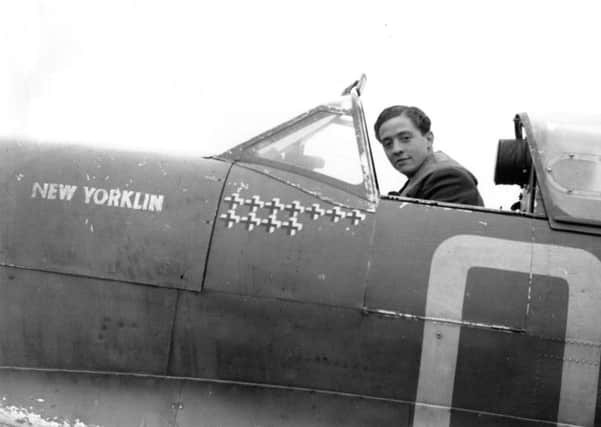FEATURE: RAF Digby marks its 100th anniversary


Personnel at the base held a formal parade, flypast and lunch for a selection of guests and VIPs connected with the base’s illustrious history.
RAF Digby was actually founded three days before the Royal Air Force was officially established in 1918.
Advertisement
Hide AdAdvertisement
Hide AdHere we take a look at some of RAF Digby’s key historical moments.


As far back as 1917 the base was used for overflow accommodation and as a relief landing ground by cadets from nearby HMS Daedalus (now RAF Cranwell).
With the arrival of heavy bombers on March 28, 1918, RAF Digby became an Air Station in its own rightmaking it one of the first RAF airbases.
Between the wars a number of celebrated RAF personalities served at the station: Arthur Harris, later to become the redoubtable ‘Bomber’ Harris of the Second World War, was one of the first Station Commanders, and Frank Whittle, who later went on to invent the jet engine, was one of the flying instructors.
Advertisement
Hide AdAdvertisement
Hide AdDuring the Second World War, RAF Digby had a unique role as a Fighter Command station in a predominately bomber county. Its Spitfires and Hurricanes provided protection to vast swathes of airspace over eastern England.


Guy Gibson, later to lead the famous Dambusters, received his DFC from King George VI while stationed at RAF Digby, and the celebrated double amputee ace Douglas Bader also served at the Unit.
John Gillespie Magee Jr, an American serving with the Royal Canadian Air Force before the US entered the war, wrote the immortal poem ‘High Flight’ whilst flying Spitfires at RAF Digby. This poem has become one of the most celebrated aviation works of all time and was quoted by Ronald Reagan in his address following the Challenger shuttle disaster. Magee was killed in a training accident in December 1941 aged just 19.
Now one of only two surviving World War II Fighter Command Stations, RAF Digby is home to a number of Joint Service Units that support and enable Defence operations across the globe. As well as providing operational support to the development of specialist Communication Information Systems, it is home to 591 Signals Unit (591SU) and the Aerial Erector School (AES).
Advertisement
Hide AdAdvertisement
Hide Ad591SU was formed on 1 June 1952 and is a Cyber Air Combat Service Support Unit which maintains watch over the integrity and security of RAF communications. The Unit provides a wide range of services that protect communications through technical investigations, education, and security training.


The AES has been located at RAF Digby since 1959. This unique training school is dedicated to providing specialist Working at Height and Advanced Fibre Optics courses to tri-Service, International and Civilian personnel.
Centenary celebration on the day saw The Vice Lord Lieutenant Graham Rowles Nicholson DL, took the salute as a Typhoon fast jet from 11 Squadron roared overhead at low level.
The 70 guests included veterans who had served at RAF Digby, civic leaders and senior officers from across the armed services. There were also representatives from the USA and Canada whose presence reflected RAF Digby’s multinational makeup.
Advertisement
Hide AdAdvertisement
Hide AdWing Commander Rich Paine, Station Commander, said: “We are proud of our support to the front line and technological innovation. From the First Word War to the present day, we have made a vital contribution to securing the nation, and it is the strength of the wider Digby community enables our success. In the RAF’s 100th year we can look forward to the future with optimism, confidence and pride.”


The event was especially momentous as it came three days before the RAF’s own centenary on 1st April. Air Chief Marshal Sir Stephen Hillier, Chief of the Air Staff, RAF, said: “In our 100th year we want to showcase the vital role the RAF continues to play in defending the British people and protecting our nation’s interests. Launched on 1st April, the celebrations are a fitting recognition and thank you to the exceptional dedication, spirit and achievements of our men and women. They also encourage us to look to the future: the greatest legacy of RAF100 will be its ability to inspire a whole new generation so that together we can help shape our next century.”